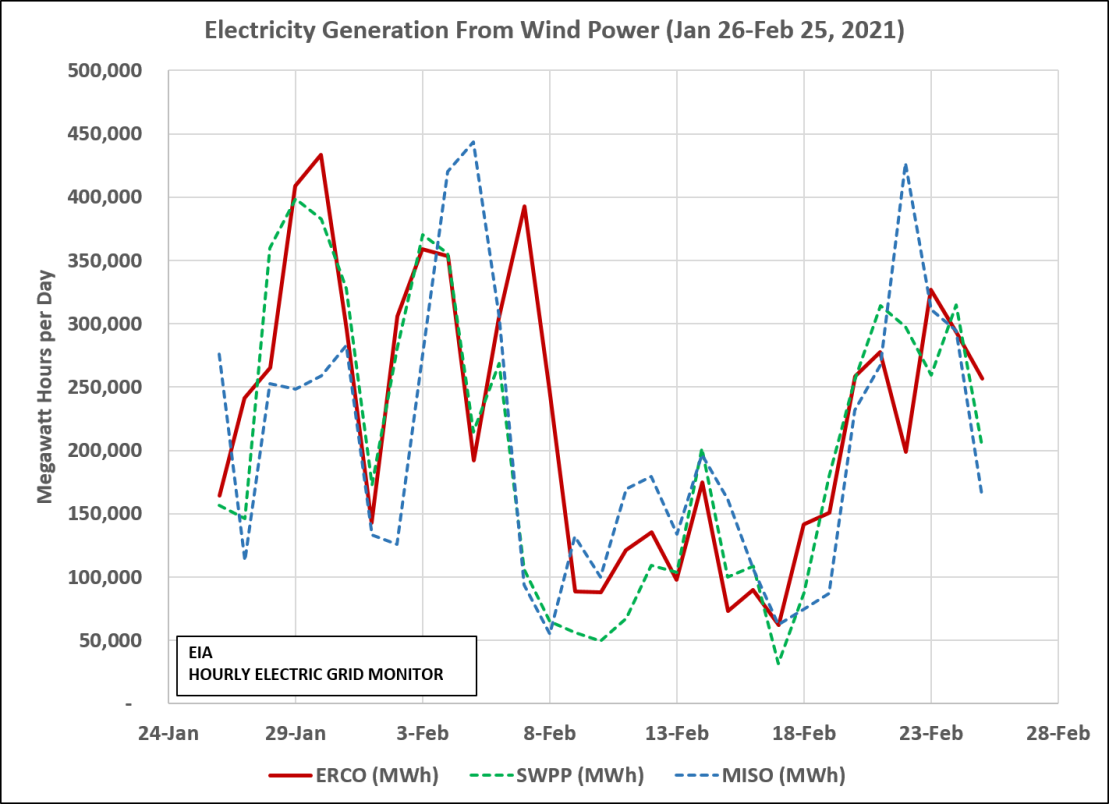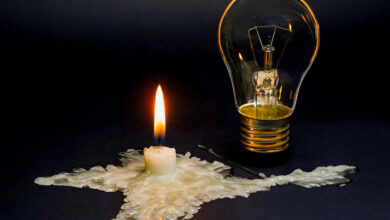Minnesota Democrats Vote to Freeze in the Dark by 2040

Guest “You can’t fix stupid,” by David Middleton
Governor Walz Signs Bill Moving Minnesota to 100 Percent Clean Energy by 2040
February 7, 2023 | EnergyGovernor Tim Walz today signed into law legislation establishing a Minnesota carbon-free electricity standard. With Senate File 4, Minnesota will take steps to lower greenhouse gas emissions, combat the climate crisis, and create new clean energy jobs. The new law ensures Minnesotans will continue to have reliable, affordable, and safe energy resources. Governor Walz signed the bill alongside legislators, labor, and environmental advocates at the St. Paul Regional Labor Center.
[…]
The bill establishes a standard for utilities to supply Minnesota customers with electricity generated or procured from carbon-free resources, beginning at an amount equal to 80% of retail sales for public utility customers in Minnesota in 2030 and increasing every 5 years to reach 100% for all electric utilities by 2040. The bill also requires that, by 2035, an amount equal to at least 55% of an electric utility’s total retail electric sales to customers in Minnesota must be generated or procured from eligible energy technologies.
The bill encourages utilities to locate new energy generating facilities in communities where fossil-fuel-generating plants have been retired or are scheduled for retirement and prioritize projects that maximize local employment, including employment of workers from communities where generation has been retired.
[…]
The bill passed the State Senate on a 34-33, party line vote. All 34 Democrats (DFL) voted for it and all 33 Republicans voted against it.
ST. PAUL, Minn. — The Minnesota Senate overnight passed a bill setting new climate goals for Minnesota. It will require all utilities to offer 100% clean energy by 2040.
Supporters say it’s important to help curb climate change. Opponents argue it’s too costly and unreliable.
[…]
Senate Minority Leader Mark Johnson (R-East Grand Forks) countered that the bill would lead to “higher costs and less reliable energy.”
“Senate Republicans tried to amend the bill with our A+ Energy Plan to keep our affordable, reliable energy available without increasing costs,” Johnson said. “Again, we see a party-line vote on an extreme bill that was rushed through the process.”
While the framers of our Constitution were wise enough to establish safeguards against this sort of “tyranny of the majority” at the Federal level, they allowed the individual States wide latitude in their own self governance. States are free to be stupid, but theoretically not allowed to inflict that stupidity on other States.
Laboratories of Democracy
By Michael S. GreveAmerican Enterprise Institute
March 31, 2001
Justice Louis D. Brandeis’s metaphor of the states as “laboratories” for policy experiments is perhaps the most familiar and clichéd image of federalism. Contrary to common belief, however, Brandeis’s famous dictum had almost nothing to do with federalism and everything to do with his commitment to scientific socialism. That substantive view proved even more influential, in political thought and constitutional jurisprudence, than the metaphor that flowed from it. To this day, it continues to inhibit a truly experimental, federalist politics.
“It is one of the happy incidents of the federal system,” Justice Louis D. Brandeis wrote in 1932, “that a single courageous state may, if its citizens choose, serve as a laboratory; and try novel social and economic experiments without risk to the rest of the country.” Conservative and liberal justices have quoted Brandeis’s dictum in some three dozen cases. The metaphor invariably surfaces in any scholarly or public discussion of federalism and is accompanied by emphatic nods of approval. It conveys a pragmatic spirit that naturally appeals to a nation of compulsive tinkerers, and it connotes equally popular sentiments in favor of localism and decentralization.
[…]
In practice, laboratory failures are contained by State borders about as well as the Wuhan lab constrained ChiCom-19.
Words are funny things
Governor Walz Signs Bill Moving Minnesota to 100 Percent Clean Energy by 2040
Not really…
It will require Minnesota’s electricity to be carbon-free by 2040, with some exceptions.
Energy and electricity are not synonyms.
Fossil fuels currently account for about 73% of Minnesota’s energy consumption; while non-hydroelectric renewables, mostly wind, only account for about 7% of energy consumption. This bill doesn’t affect transportation or residential natural gas for heating and hot water (yet).
65% of Minnesota homes currently use natural gas for heating and hot water.
56% of Minnesota’s electricity generation already comes from from “carbon-free” sources.
- Fossil Fuels 44%
- Nuclear 23%
- Hydroelectric 1%
- Non-Hydroelectric Renewables 32%
If Minnesota built four more nuclear power plants, they could probably replace the fossil fuel generation with clean, reliable electricity. However, Democrats (DFL) have already closed off that option.
Carbon–free energy sources are those that don’t release any carbon dioxide, such as solar, wind, hydropower or nuclear. Under the bill, nuclear power is not considered a renewable energy source, but it is carbon free.
Minnesota has two nuclear plants, at Prairie Island and Monticello, owned by Xcel Energy. Xcel has said it plans to continue to operate those plants at least for the next couple of decades to help its carbon-free goals.
Minnesota law currently bans building new nuclear plants in the state. Some Republican lawmakers have argued that the ban should be lifted to allow new nuclear energy production, especially smaller modular technology.
So… As it stands right now, Minnesota utilities will have to replace their fossil fuel generation with wind power and its seasonal reliability issues.
Just like in Texas, Minnesota’s wind power generation falls off in summer…
Midcontinent ISO (MISO) faces a capacity shortfall in its North and Central areas, resulting in high risk of energy emergencies during peak summer conditions. Capacity shortfall projections reported in the 2021 LTRA and as far back as the 2018 LTRA have continued. Load serving entities in 4 of 11 zones entered the annual planning resource auction (PRA) in April 2022 without enough owned or contracted capacity to cover their requirements. Across MISO, peak demand projections have increased by 1.7% since last summer due in part to a return to normal demand patterns that have been altered in prior years by the pandemic. However, more impactful is the drop in capacity in the most recent PRA: MISO will have 3,200 MW (2.3%) less generation capacity than in the summer of 2021. System operators in MISO are more likely to need operating mitigations, such as load modifying resources or non-firm imports, to meet reserve requirements under normal peak summer conditions. More extreme temperatures, higher generation outages, or low wind conditions expose the MISO North and Central areas to higher risk of temporary operator-initiated load shedding to maintain system reliability
And, just as it did in Texas in February 2021, wind power can fail to show up when it’s really cold.

But at least Minnesotans will still be able to heat their homes and have hot water even when the lights go out…
At least, they’ll still be able to heat their homes and have hot water until the State is fully electrified…
As you can see, total household energy use surges in the winter from about 1,000-kilowatt hours (kWh) during summer months to more than 3,500 kWh in January 2020 and nearly 4,500 kWh in January 2022. This means total household energy use in Minnesota increases by 3.5 to 4.5 times in colder months.
This has important implications for policy because extreme environmental groups and progressive politicians want to replace natural gas for home heating, cooking, and water heating with electricity as part of their initiative to “electrify everything.”
However, Minnesota’s current electric grid is woefully inadequate to replace the volumes of natural gas used for home heating, and this will be especially true as reliable coal plants are shut down in the coming years, and Minnesota utilities build wind, solar, and battery storage to replace them.
Attempting to electrify home heating while simultaneously undermining the reliability of the electric grid will cause huge spikes in electricity demand during cold periods, but the power grid may not be able to keep up, resulting in the same rolling blackouts that hit several southern states over the Christmas of 2022, according to Bloomberg.
Unfortunately, Minnesota lawmakers seem keen to repeat the energy mistakes of other areas.
Minnesota Democrats (DFL) seem to be hell-bent on electrifying everything, while making electricity less reliable and more expensive. As Ron White said:
Why aren’t the utilities fighting this?
“We’re actually excited about being pushed to go faster,” Chris Clark, Xcel’s president in Minnesota, North and South Dakota, said in an interview. “We also recognize, though, that it’s a challenge.”
A big reason why major utilities aren’t opposing the bill is because it includes exemptions and ways they can meet the standard without ditching fossil fuels altogether.
For example, a utility could buy renewable energy credits to offset electricity generated by a natural gas plant.
Also, the bill contains so-called “off ramps.” The state Public Utilities Commission could allow a utility to delay meeting the standard if doing so would have big impacts on electric rates or create reliability issues.
So… It’ll basically be greenwashing and virtue signaling if when this law starts to drive up prices and inflict reliability issues.
There’s also the endless subsidies for unreliable energy sources.
The Greatest US President of the 20th Century said it best…
How will this affect the rest of MISO?
Unlike Texas with its own grid operator (ERCOT), Minnesota is part of Midcontinent System Operator, Inc. (MISO).
The Minnesota State Legislature cannot dictate the fuel mix, nor can it interfere with the interstate and international flow of electricity within MISO. North Dakota is already gearing up to sue Minnesota over this law.
North Dakota Industrial Commission moves toward suing Minnesota over carbon-free bill
AMY DALRYMPLE Bismarck Tribune Feb 6, 2023The North Dakota Industrial Commission voiced unanimous support Monday to move toward filing a lawsuit challenging Minnesota’s carbon-free electricity legislation, with North Dakota’s governor arguing the neighboring state is overreaching.
Minnesota Gov. Tim Walz is expected to sign a bill that requires Minnesota utilities to transition to 100% carbon-free electricity by 2040. The bill would prevent North Dakota utilities from exporting power generated from coal and gas to Minnesota. North Dakota exports about 50% of its electricity supply, with the vast majority used in Minnesota, according to the North Dakota Lignite Energy Council.
North Dakota Gov. Doug Burgum, who chairs the state’s Industrial Commission, said state leaders tried unsuccessfully to urge Minnesota to amend the bill so it would not affect North Dakota utility companies. North Dakota officials will continue to work with Minnesota to attempt to reach an agreement to avoid a lawsuit, Burgum said.
[…]
North Dakota successfully sued Minnesota over a similar law in the past.
NORTH DAKOTA PREVAILS IN MINNESOTA LAWSUIT AGAIN
August 14, 2018BISMARCK, ND – The seven year battle between North Dakota and the State of Minnesota may now be at an end, with the affirmance of an award of attorney fees imposed against the Minnesota officials named in the suit.
Attorney General Wayne Stenehjem sued Minnesota in 2011 over the restrictions imposed by Minnesota’s Next Generation Energy Act (NGEA). In the lawsuit, the State and co-plaintiffs, North Dakota rural electric utilities and energy companies who serve the needs of consumers in the upper Midwest, alleged that the Minnesota law violated the Commerce Clause of the US Constitution by restricting transmission of electricity generated in North Dakota and consumed in Minnesota unless it met that state’s carbon dioxide emission requirements. If left in place, the law would have restricted North Dakota utilities from selling power into the Midcontinent Independent Transmission System Operator (MISO) market – hurting businesses and customers in both Minnesota and North Dakota.
After the District Court and ultimately the 8th Circuit Court of Appeals upheld the position of the state of North Dakota and these rural electric utilities and energy companies that the Minnesota statute was unlawful and awarded attorney fees as prevailing parties, the state of Minnesota appealed the award of attorney fees to the 8th Circuit.
Today, an appellate panel upheld the award to North Dakota for $1.3 million. Added to that amount is the right to pursue recovery of interest at the prevailing federal rate and the costs of pursuing the fee through the courts.
“North Dakota maintained from the beginning that the Minnesota enactment attempting to prohibit importation into Minnesota of energy generated in North Dakota was a violation of the US Constitution and federal law. Our arguments have prevailed every step of the way. Now, I hope that Minnesota will finally pay the bill for the expense they caused us to incur, and end the matter,” Stenehjem said.
Maybe Ron White wasn’t the most apt quote for this post.




